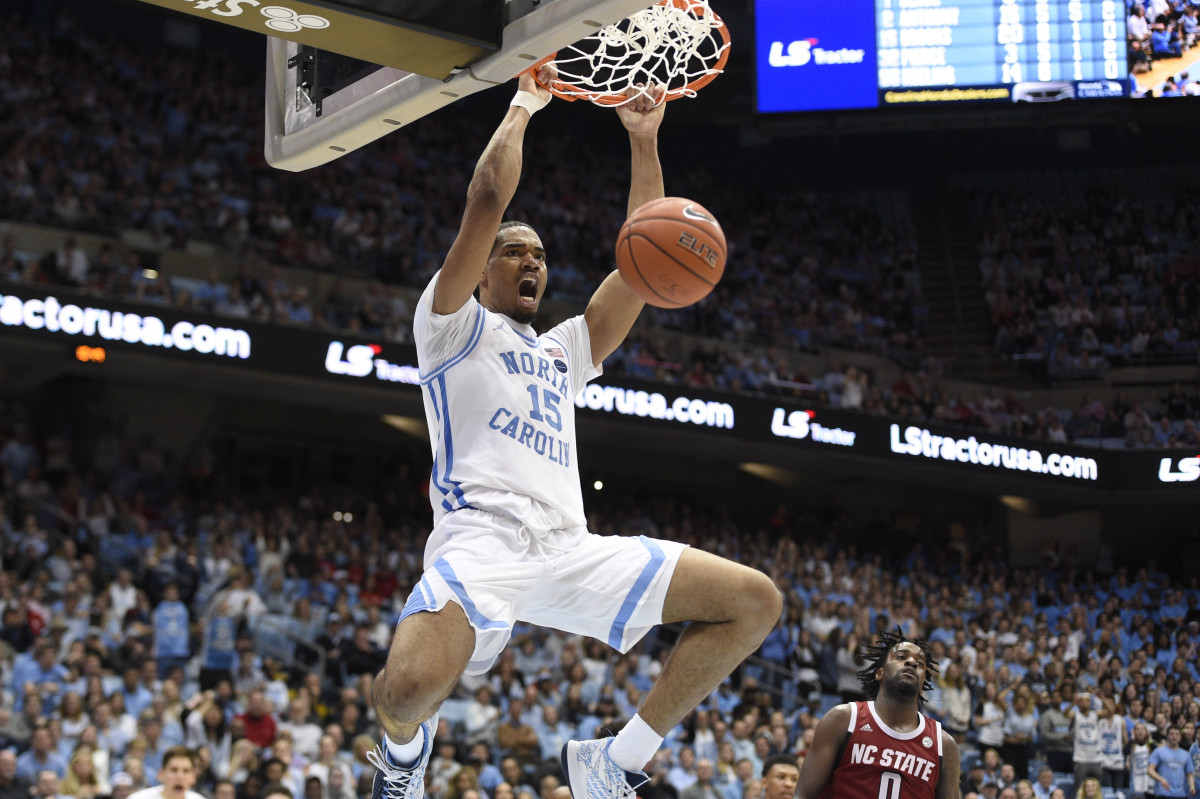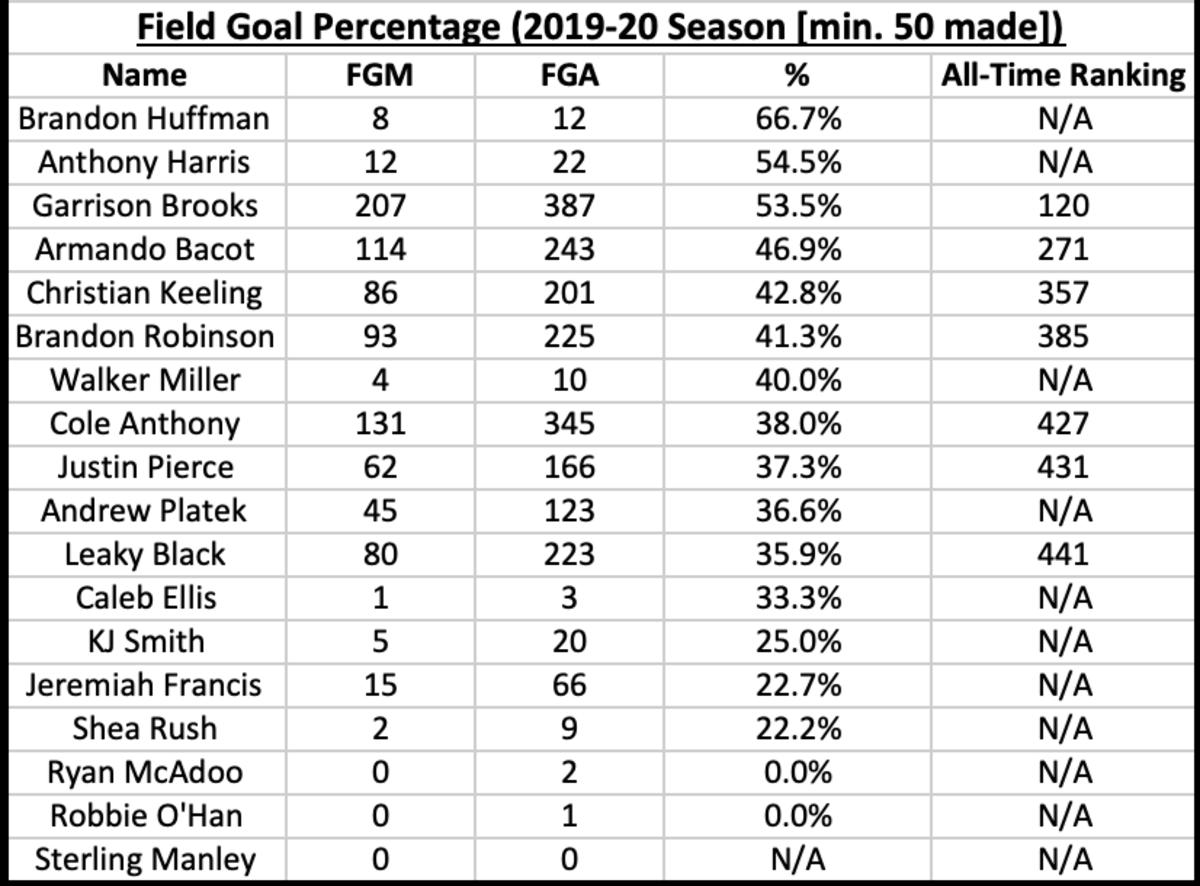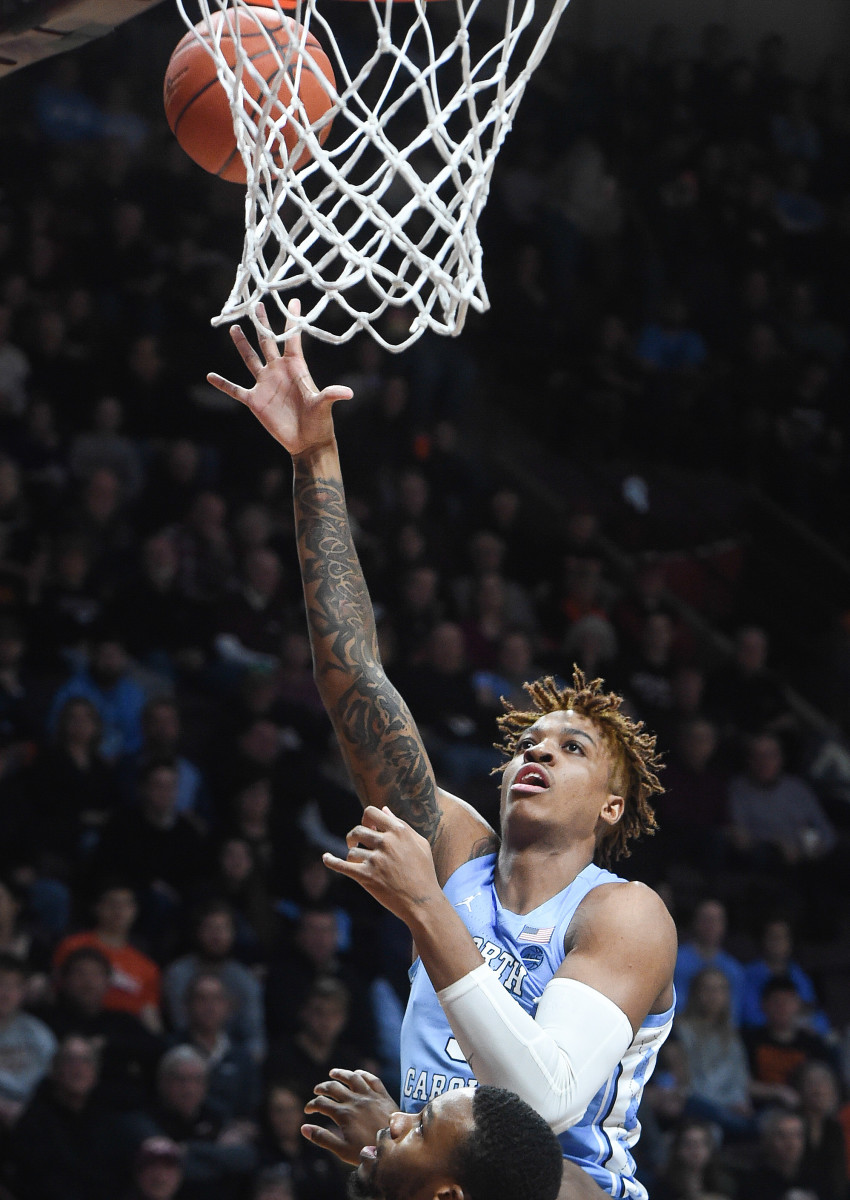UNC Basketball: 2019-20 Stats in Review - Field Goal Percentage
Field goal percentage helps measure the efficiency with which a player converts his or her shots “from the field”. It’s the difference between a player scoring 20 points and taking 20 shots to do so or scoring 20 points and taking just 10 or 11 shots.
For those who are thinking, “Wait, isn’t a field goal when you kick a football between the uprights and it counts for three points?”, let me briefly define for you a “field goal” in basketball.
A field goal is any attempted shot while the game clock is running. It could be a dunk, a short shot, a three-point attempt, whatever; it counts as a field goal attempt. The reason to specify “while the game clock is running” is because free throws don’t count as “field goals”.
And remember, we are talking about field goal percentage, so this is a metric to help determine how a player is shooting, expressed as a percent.
For example, Garrison Brooks had a phenomenal game against NC State on February 25 this year in the Dean Dome. He poured in 30 points, by shooting 8-for-15 on field goals and 14-for-16 from the free throw line. In order to determine Brooks’ field goal percentage for the game, you would divide the number of made field goals (eight) by the number of attempted field goals (15). Remember, free throws don’t factor in. Eight divided by 15 is 0.533, which translates to a 53.3 field goal percentage for the game.
Here’s another example: On January 25, Brandon Robinson managed a career high 29 points against Miami, thanks in large part to making six threes. Robinson’s shooting line that afternoon was 11-for-16 on field goals, 6-for-10 on threes, and 1-for-2 on free throws. Once again, free throws don’t factor in, so we get rid of those. We also must recognize that three point makes and attempts are already factored into the field goal numbers so the 11-for-16 on field goals is inclusive of the 6-for-10 on threes. Statisticians like to separate out the three-point shooting numbers so we can see a player’s efficiency from beyond the arc. Just like in the previous example, we divide the made field goals (11) by the attempted field goals (16) to arrive at field goal percentage of 68.8 percent for the game.
One thing you’ll notice as you study field goal percentages is that a front court player’s numbers are higher (or at least should be) than a back court player. Why? Think about shot selection. A front court player is mostly shooting lay-ups, hook shots, dunks, short baseline jumpers, etc. Put another way: Shots that go in with a higher level of frequency. Meanwhile, while a back court player will certainly drive to the hoop, a large majority of their shots are coming from farther away; resulting in a lower field goal percentage.

Over the course of the next several weeks, I’ll be reviewing the stats from the 2019-20 North Carolina basketball team, one category at a time. We’ve already looked at total points, total rebounds, total assists, total three-pointers, total blocks, and total steals. We move today to field goal percentage.
As a reminder: while these stats won’t tell the whole story of the season, they will help provide context and insight for both the present and historical context.
The following chart lists each player, their field goal percentage for the season, and where they ranked in the Carolina history books for field goal percentage in a single season (for those who achieved the minimum threshold of 50 made baskets).

Observations
- As a team, the Tar Heels shot 42.0% (865-for-2058) this season, the lowest field goal percentage for a Carolina team since the 1959-60 season (41.3% | 606-for-1467). That means this season was Carolina’s lowest field goal percentage in the last 50 years. Roy Williams said this team would struggle to score. He really wasn’t lying, was he?
- In the chart you notice that Brandon Huffman technically led the team with a 66.7% field goal percentage. This number would make him the all-time career leader at Carolina in field goal percentage, but with just eight made field goals the sample size is far too small. That’s why the threshold for being considered in the rankings is set at 50 made field goals. To further prove the point, Aaron Rohlman hit 100% of his shots in 2017-18, but only took three total shots. With all due respect to Aaron Rohlman, you don’t want to count a person who went 3-for-3 as leading your team in field goal percentage.
- For the record, Brendan Haywood holds the record for highest single-season field goal percentage, sitting at 69.7% (191-for-274).
- If you’re wondering, Brandan Wright holds the career UNC record for field goal percentage (min. 100 made field goals). That number is 64.6% (228-for-353).
- Given the threshold, Garrison Brooks comes in as the team leader with a 53.5% field goal percentage. That number is good for 120th on the single season Carolina field goal percentage list.
- Brooks’ number is the lowest qualifying field goal percentage to the lead the team since 2012-13 when Brice Johnson was the top man, shooting 51.1% (90-for-176).
- Interestingly, the lowest field goal percentage to the lead the team prior to that was the 2008-09 National Champion team, led by Ty Lawson’s 53.2%. The difference on that team is that all six players who passed the 50 made field goals threshold shot at least 47.1% from the field. Pretty impressive.
- This year marks just the second time in the Roy Williams era that at least two qualifying players haven’t hit 50 percent of their shots. Brooks was the only one this year, and Brice Johnson was the only one on the previously mentioned 2012-13 team.
- For all of Christian Keeling’s early struggles, he actually wound up third on the team in field goal percentage.

Conclusions
Numbers and stats don’t tell the whole story, but they do help tell the story. So what story do these numbers help tell?
The story the numbers help tell is that Roy Williams wasn’t lying, back on October 9, 2019, when he said that the Tar Heels may struggle to score. They did indeed struggle. Historically so.
As mentioned above, Carolina shot 41.3 percent in the 1959-60 season and 42.0 percent this season.
That means the last time Carolina had a field goal percentage lower than they did this season, Dean Smith was an assistant under Frank McGuire and was still two years away from becoming head coach.
Put another way, UNC hasn’t shot a field goal percentage as low as this season in half a century.
But let’s turn the page, shall we? Here’s the silver lining: That means that all those years in between, the Tar Heels have been filling it up offensively.
That means that it took the most injury-laden season ever to slow down the Tar Heel offense.
That means Tar Heel fans are fortunate to get to regularly experience an extremely high level of basketball.
So hang on tight, better days are ahead.
We continue in our series of examining the 2019-20 UNC stats on Tuesday, June 9. Next up: Free Throw Percentage.
You can follow us for future coverage by clicking "Follow" on the top righthand corner of the page.
Send Isaac Schade an email to talk more about this article.
Follow us on Twitter: @SI_HEELS | @isaacschade
Please post any comments below!
